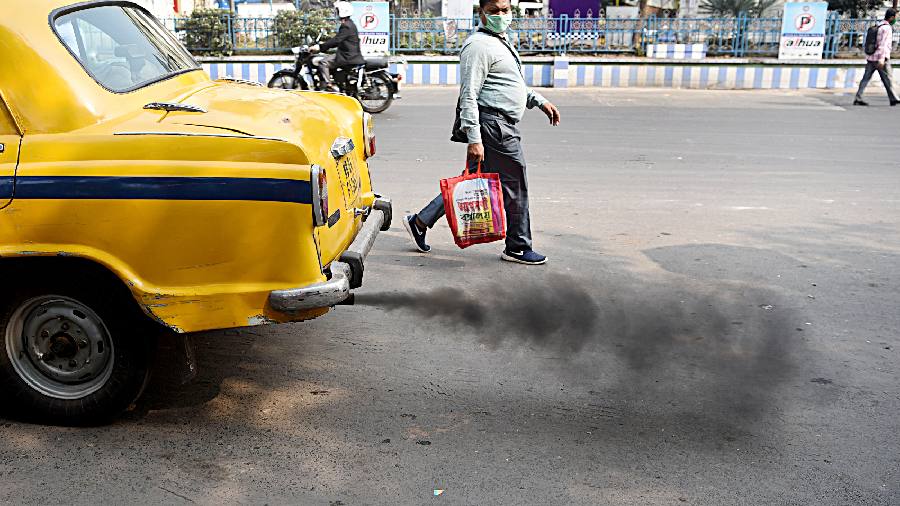The state transport department on Thursday received two remote sensing devices that can check the tailpipe emission levels of moving vehicles.
The state pollution control board (PCB) handed the two devices to the transport department and pledged, in an MoU, 18 more over the next few months.
The transport department had one such device until now. “We have received two more and will get another 18. These will be used across the state and will help strengthen the monitoring of vehicular emission,” said Dibyendu Das, director of the state transport department.
A remote sensing device can spot the emission from the tailpipes of moving vehicles. The lone such device that was at the disposal of the transport department is usually mounted on a van parked on Red Road, among other places.
“We will not stop faulty vehicles (whose emissions breach the permissible pollution level) on the road. It will slow the traffic down. The owners of the vehicles will be sent notices and fined accordingly,” said an officer in the traffic department.
An air pollution source apportionment study — a survey of the relative contribution of pollution sources to particulate matter in the air — done a few years ago found vehicular emission to be a major contributor to the pollution load in Calcutta.
Diesel-powered vehicles, most of which are in commercial use and ill-maintained, are the principal contributor to the city’s vehicular emission, the report said.
Transport department officials have in the past said they received reports that vehicles with a valid pollution-under-control certificate are failing the pollution test.
“We have observed the same during random checks on vehicles using our remote sensing device. Some of the vehicle owners were found to be carrying valid certificates,” an official of the transport department had told Metro.
“We suspect that a number of emission testing units are fudging test results by using pirated software or through improper use of the smoke meter inserted in the exhaust pipe of a vehicle. More sensing devices will help us track such centres,” said the official.
A study by the National Environmental Engineering Research Institute in 2017-18 found that vehicles contributed 23.5 per cent of PM2.5 in Calcutta’s air during winter. In Howrah, vehicles accounted for 31 per cent of PM2.5.
